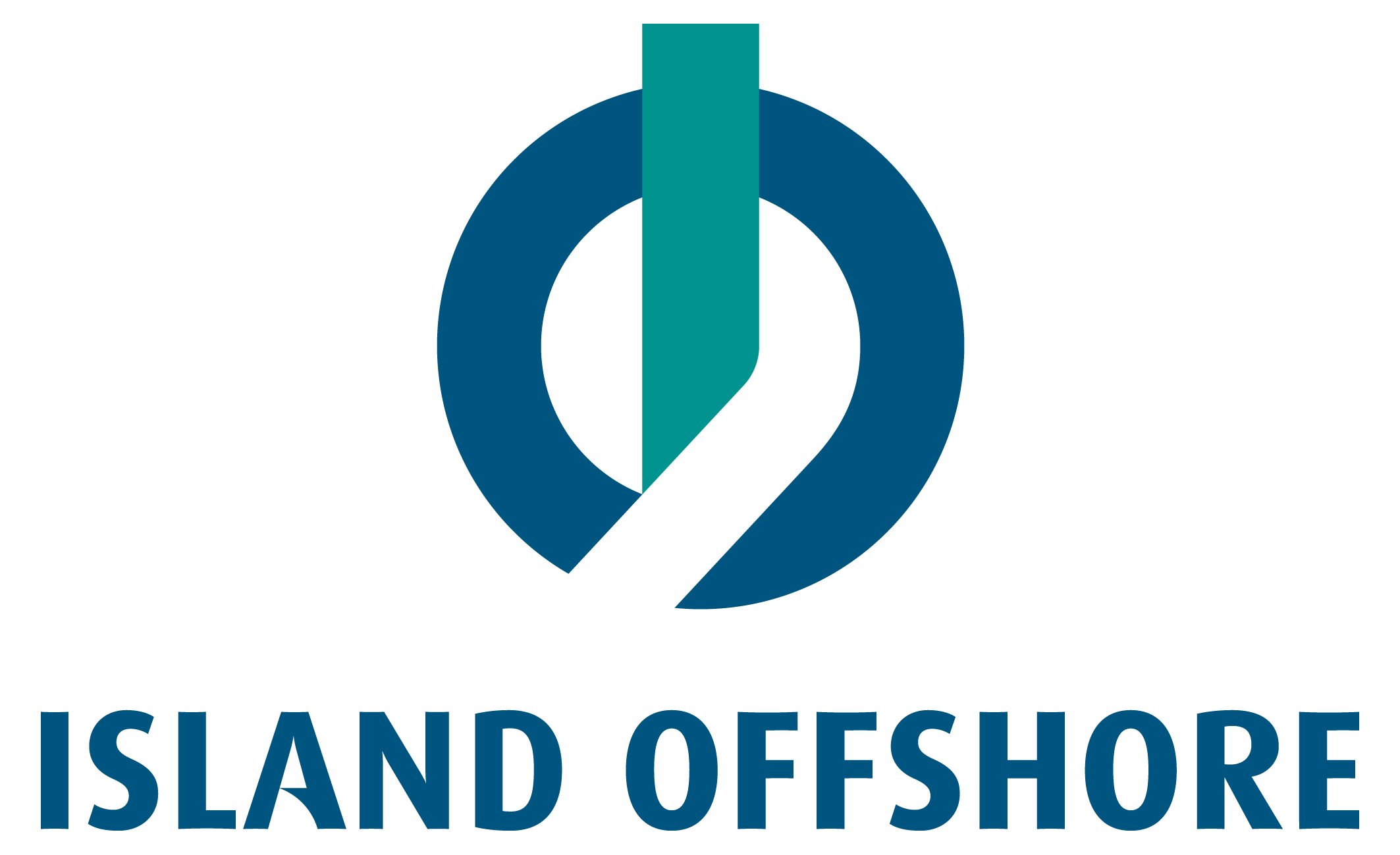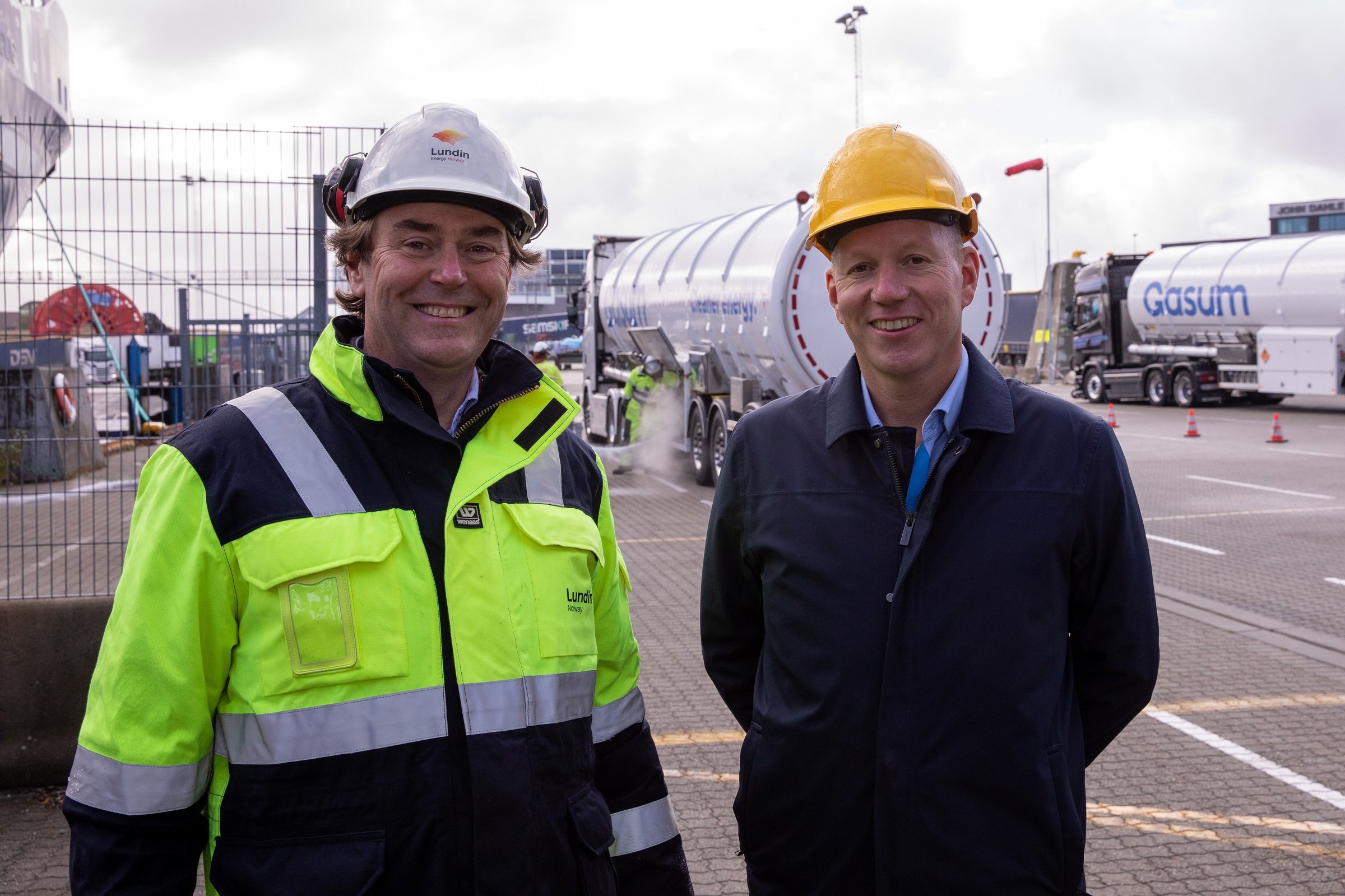Island Crusader - the first to run on biofuel
Photo: Lundin Energy Norway
Island Crusader is the first offshore vessel on the Norwegian shelf running on biofuel, resulting in immediate and significant reductions in CO2 emissions.
This pilot, run by Lundin Energy Norway, also proves that biogas can be used on LNG engines without any modifications at all. The engine manufacturer Bergen Engines has previously run tests on land and concluded that switch to biofuel can be used without making any modifications to the vessel.
Johan Mohr, head of procurement and logistics in Lundin, together with Hallgeir Linge Reitan, head of chartering in Island Offshore.
“There is a significant potential in the oil and gas industry, but also in all other areas where LNG vessels are in use,” says Johan Mohr, head of procurement and logistics in Lundin.
“With this project we can help open up a new market segment for biogas producers,” he continues.
Cow manure and fish waste
The biogas used on Island Crusader is produced from cow manure and waste from fish and wood processing. It consists mainly of methane, however upon combustion, CO2 and water are formed. Since the raw material comes from biological material, the combustion is calculated as CO2-neutral as it enters the natural CO2 cycle. There is no net increase in the CO2 level in the atmosphere.
Last year, the total consumption of LNG for Island Crusader was 1.502 tonnes, with associated CO2 emissions of 4.206 tonnes. By using biogas, the CO2 emissions will be eliminated.
Photo: Lundin Energy Norway
Managing Director in Island Offshore, Tommy Walaunet.
“We are proud to be a partner and supplier to a forward-looking player such as Lundin. They show that they will take the lead and use the solutions that are available to significantly reduce CO2 emissions. We believe in a step-by-step approach to zero emissions, and this requires close and good cooperation between the actors in the value chain and with the authorities. We are confident that this will also make our vessels more attractive in the market,” says Tommy Walaunet, Managing Director of Island Offshore Management AS.
Currently the supply of biogas is insufficient for all LNG vessels to replace their fuel, however plans exist to build several production facilities in Norway. This will enable the industry to utilize recourses which currently is going to waste. In addition, new workplaces might be created.
Potential beyond oil and gas
An LNG-fuelled PSV is in principle among the vessels with lowest emission of greenhouse gases. A switch to biogas can eliminate practically this entire emission given the carbon neutral nature of the fuel.
CEO of The Norwegian Shipowner’s Association, Harald Solberg.
“It’s extremely positive that the oil and gas industry is stepping up and paving the way for use of biogas in vessels,” says CEO of The Norwegian Shipowner’s Association, Harald Solberg.
“This demonstration also illustrates the potential for emissions reduction within all parts of the shipping industry where LNG vessels are used. A united international shipping industry has the ambition of becoming climate neutral by 2050. If we are to achieve this goal, we need new zero-emission technologies that won’t be accessible for a few years. The opportunities we now see with biogas will help bridge the gap until then, “ Harald Solberg concludes.





